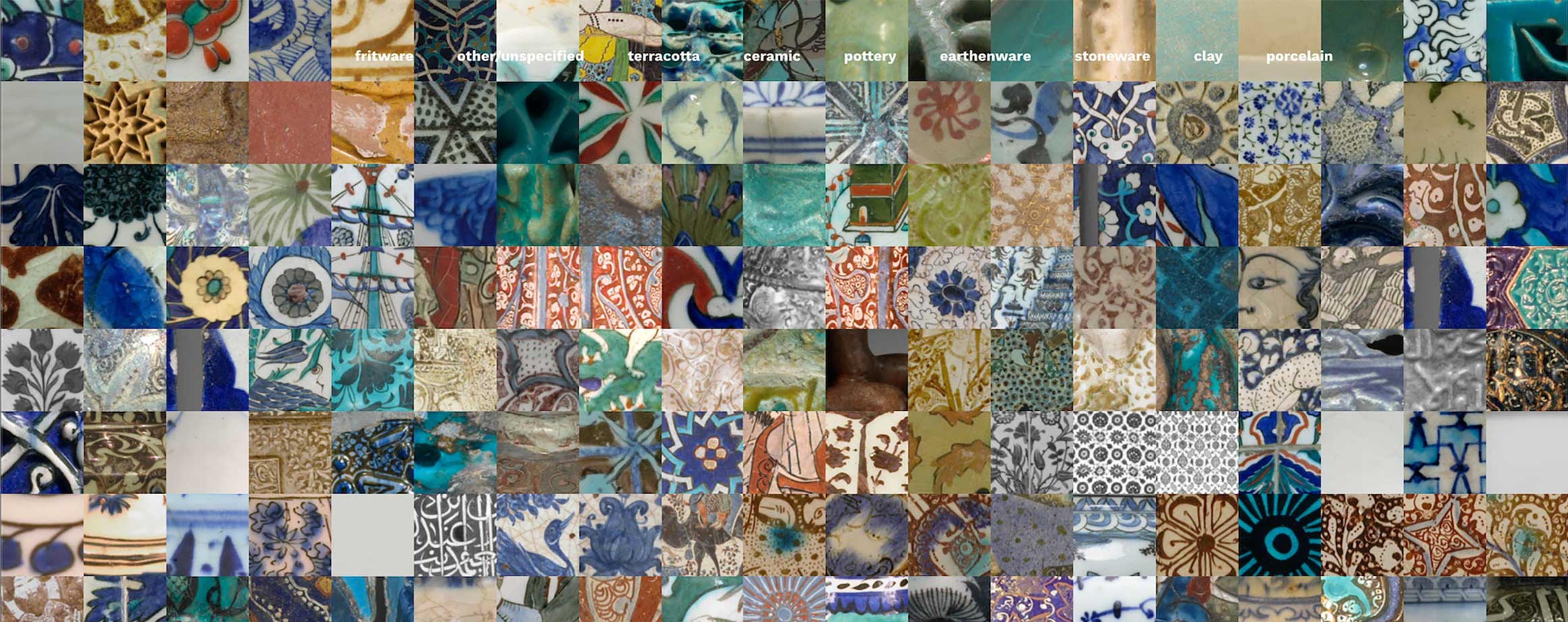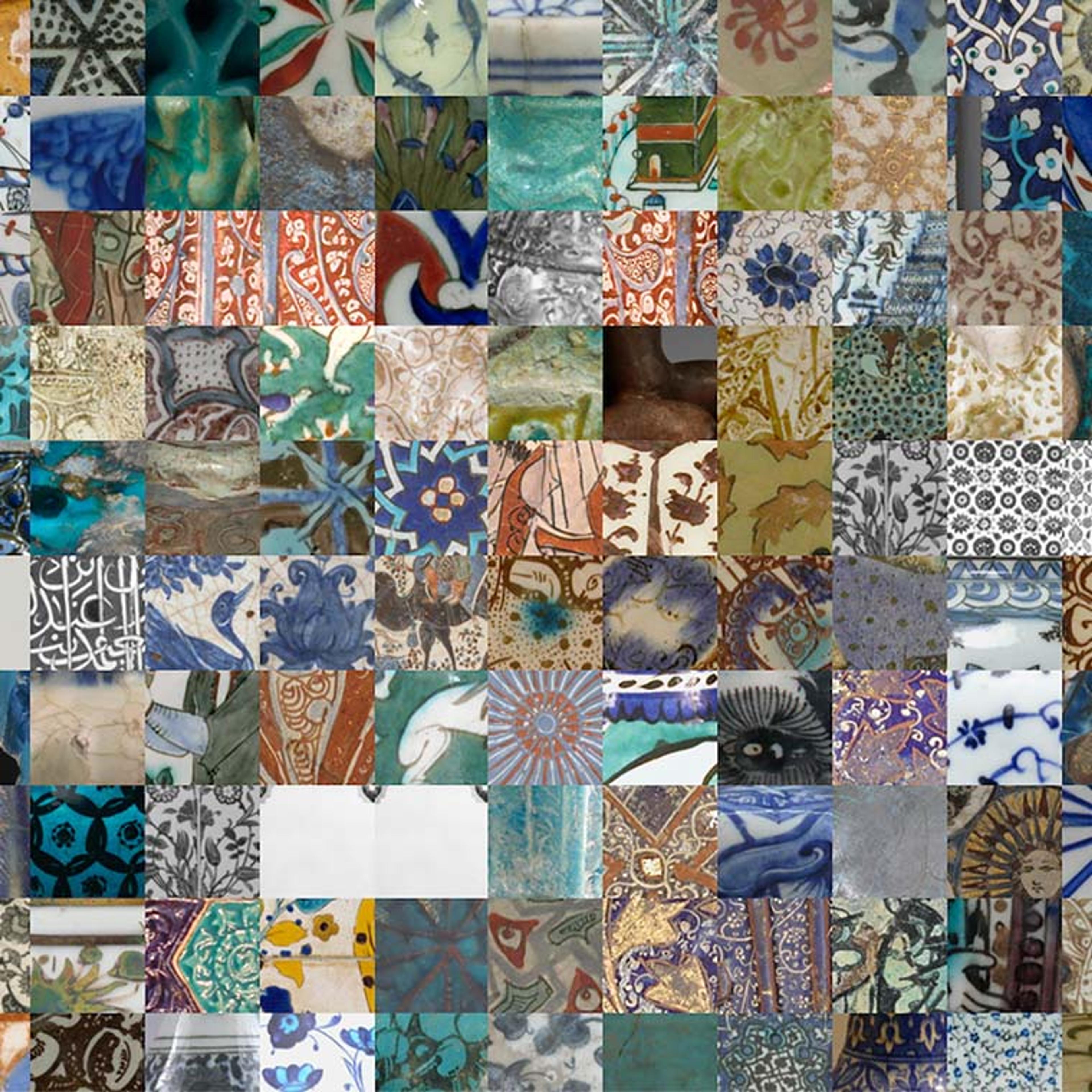
The Met Ceramics Lookbook, designed by Parsons student Zui Chen, uses The Met Open Access API to compare the textures of ceramic objects in the Met collection.
This past fall, students from the Master of Science in Data Visualization program at Parsons' School of Art, Media, and Technology were assigned a challenging task: interpreting data from The Met's Open Access collection to design thoughtful, creative, and often eye-opening presentations that examine a topic of their choice. Near the end of the semester, they were given the unique opportunity to present their projects to the Museum's Digital Department.
During the session, attendees were dazzled with more than a dozen three-minute "lightning round" presentations covering a diverse range of topics, from the exploratory and investigative to the critical and analytical. Subjects included the representation of women artists in the Museum’s collection over time, variations in depictions of the Catholic stations of the cross, and the length and sonic frequency of aerophones in the Department of Musical Instruments.
This collaboration is just one example of how The Met Open Access API—which celebrates its third anniversary this month—is used in classrooms to support research, study, and innovation. This is also the second year that the two institutions have worked together. Last year, associate professor of data visualization Richard The reached out to The Met to inquire about using our data set in their examination and understanding of how data is created, as well as how it shapes interactions and visual representation. The Museum was happy to point the class to The Met’s Open Access collection and offer assistance. Since then, the importance of data visualization has continued to grow, and the class more than doubled in size when it was offered again this year.
Parsons students saw the wealth of data related to various aspects of The Met as a unique opportunity to inform their work with real-world data.
"This was the first time I was able to really put my hands on an API," wrote Xingwei Huang, whose visualization broke down the frequency and cultural significance of apples in the Collection. "Before this I only knew the concept of it. The experience of working with Met API has broadened my understanding about how data query works in real life."

Apple of My Eyes, a data visualization project by Xingwei Huang, which she created using Met Open Access API.
More than just a set of data, the API provided these students with the opportunity to draw some unexpected conclusions about The Met, its collection, and its history. "As an artist and designer, I enjoyed digging into the stories of work I’ve known from a distance," wrote student Brad MacDonald, whose project uncovers which areas of The Met Fifth Avenue are the quietest places to reflect. "What most surprised me was how both the collection and collected data functioned as a mirror, reflecting the values of the institution itself. There were areas in which the institution invited challenges and also areas of discomfort."
One area of discomfort was the question of gender equality. Several students broached this loaded topic, including in one presentation on collecting works by women artists and another on the ratio of nude to non-nude female models represented in objects.

Inspiration for Lulu Tanenbaum's project Undress for The Met came from The Guerrilla Girls' 1989 poster, Do Women Have To Be Naked To Get Into the Met. Museum?
"It was really inspiring to see all the creative ways these students used our data. From feminism to settling the Fender vs. Gibson guitar debate it’s clear that the data we work with is not just limited to the work we do here at the museum," says Skyla Choi, a studio manager in The Met’s Digital Department who was among the many staff members in the audience for the presentation.
When The Met introduced Open Access in 2017, it aimed to provide tools to artists, designers, educators, and students. Seeing the collection as a key teaching aid for the next generation of data interpreters is just one of the ways that goal is being realized. According to The Met's Jennie Choi, General Manager of Collections Information, the collaboration has been equally beneficial for the Museum: "It was great to see a new audience engage with and be inspired by The Met's collection. They created projects that showed our objects in new ways, revealing connections we didn't know existed."
This is the first post in a three-part series celebrating the third anniversary of The Met's Open Access API. You can view the rest of this series here.
